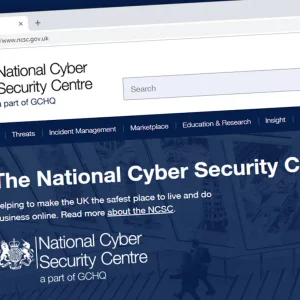
The current sharing economy championed by Uber, Lyft, AirBNB and others arose from new business models fueled by information technology or, more specifically, the flow of information. Recently, a new global sharing economy seems to be germinating. It is the free-flow of professionals between businesses, ripe with business innovation and culminating in a new talent supply chain.
This new green shoot of the sharing ecosystem is still in its infancy, but the benefits for employees, companies and the industry are unmistakable.

Chief Marketing Officer, ThreatMetrix
From Customer to Employee
Take the example of the cybersecurity industry. Cybercriminals are rapidly evolving their tactics, and in the race to defend against the ensuing tsunami of threats, a symbiotic relationship has sprouted between cybersecurity vendor and customer. This not only encompasses attracting and retaining the best talent within the ecosystem but also embraces the movement of employees from customer to vendor and conversely from vendor to customer.
I’ve observed this new ecosystem in action. Several current employees within our organisation made the decision to join ThreatMetrix directly from our valued customers, including Intuit, Yandex Money, Lloyd’s Bank, PayPal, Visa and others.
The migration of employees from customer to vendor means that their industry domain expertise also migrates from one company to the other. This knowledge retention helps strengthen the ecosystem, as witnessed by Andrey Kovalev, a subject matter expert on the sales team at ThreatMetrix who came directly from Yandex Money, which is “basically the Russian version of PayPal.”
“As a former customer myself, I can help new customers by asking the right questions,” Kovalev said to me. “I know what they want before they even know it themselves. It helps a lot. It makes it easier to be proactive and to deliver strategic value.”
Hiring former customer champions not only provides the vendor with application and industry-specific expertise that is difficult to home grow, but also fortifies — versus denigrating — the business relationship.
Krishnakumar Kalkiraj, vice president of user facing applications on our engineering team has seen this firsthand — beginning when he was a customer with Intuit.
“Open sharing of information gives us a very deep understanding of the other side. It helps us better understand what the customer is trying to do,” Kalkiraj said.
Having industry-specific knowledge, combined with the familiarity of vendor offerings, translates to an accelerated learning curve, helping new star employees provide even greater value to their new organisation.
“When delivering a presentation at a large conference in Russia, it helped a lot. It was easier for me to relate to other customers or prospects because it delivered more informed point of view on the challenge or problem in hand,” Kovalev said.
Another former customer-turned-employee, Ian Spanswick, who is the director of customer engagement in EMEA at ThreatMetrix, after transitioning from Lloyd’s Bank in London, has also experienced this for himself.
“I now have more credibility when talking to customers. I was at one meeting and, when the customer found out I used to be a customer, as one person described it, the customer relaxed,” Spanswick said. “It’s a really interesting dynamic. It would be difficult to synthesise that relationship. It introduces empathy with customer.”
Signs of a Healthy Industry
But, this isn’t just a one-way street. Some former employees have joined our partners, such as eBay. It’s not that these departures of highly talented professionals aren’t being felt. Naturally, there are growing pains and a sense of loss anytime this happens. But rather than creating a negative dynamic between business partners, the dynamic is usually quite the opposite – because it is fueling innovation necessary in the fledgling digital economy.
Employees are developing specialised skills and putting them to optimal use. Knowledge is being repurposed within the ecosystem so there is not just tacit collaboration occurring, but real problem solving and accelerated change taking place.
“If someone is asking for something that we never thought about, either we don’t know what they are trying to do or they don’t know,” Kalkiraj said to me. “But, it can be resolved when we engage with our partners, and we all come in and share.”
Product offerings are developing more quickly and with specific customer needs in mind. This, of course, leads to changes in business processes. Overall, the discipline is evolving and maturing, and organisations within the industry are morphing.
Cross-fertilization helps everyone. It’s a lot easier to understand each other to make the industry stronger. We’re all trying to beat the fraudsters and now we’re actually dealing with competitive advantage.
No More Attract-and-Retain
This shift of talent also creates a vacuum, drawing new talent into the ecosystem. But the talent is quickly vetted for creative problem solving by the issues at hand.
This new talent supply chain is very different from the traditional attract-and-retain mindset. Companies traditionally have spent much time and money in the hiring and training of employees. The idea of these employees leaving was seen as a waste of resources.
In the past, companies changed their entire onboarding and training processes, sometimes even the corporate culture, in an attempt to retain employees. Techniques, such as gamification, were also instituted in the hope of keeping employees on staff.
However, traditional attract-and-retain focused on the past instead of looking ahead. And, looking ahead is one of the key attributes to hyper-innovation.
Not a Gig Economy
This symbiotic sharing of knowledge and employees is not really one and the same as the gig economy either, where temporary positions are common and organisations contract with independent workers for short-term engagements.
While the gig economy has some practical benefits for employee and company, those are generally near term cost-saving measures and not focused on investing in core competencies. Workers get a “gig” and the company gets specific projects completed. Workers maintain their freedom and work-life balance. However, while the generally tactical focus might enhance the health of a company it’s not about reimagining and reinventing core functions. Those temporary employees take their money and knowledge gained at your company and, quite often, move on to a completely different industry. Instead of knowledge being shared to help foster growth within an industry, that knowledge is lost in the ether.
Talent sharing is the future
In an ecosystem, those with an advantage thrive while others wither. The same is true in the fast moving ecosystem that today is cybersecurity.
The long frowned upon “non-compete” policies around the hiring and retention of employees seems to be have replaced by a new dynamic that is functioning like the proverbial rising tide that lifts all ships.
In the continuing war for talent, this new talent supply chain produces employees who have increased expertise in fraud, digital identities and threat detection. Just as others in the shared economy figured out a unique way to utilise assets and employees, this new talent-sharing ecosystem is evolving to retain knowledge, strengthen the industry, and boost innovation into hyper-drive.
For companies looking to innovate and extend their business model, this new global dynamic is one to be recognised — and in all likelihood embraced — as the agent for progressive change for both customers and vendors.







